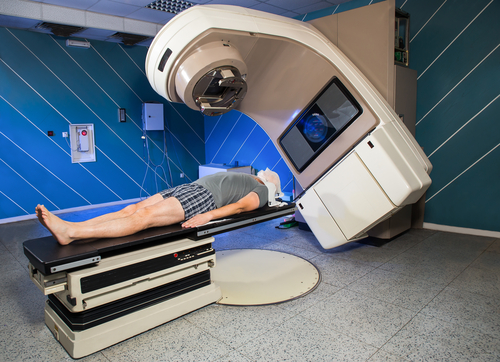Rising incidences of cancer across Europe, largely the result of people living longer, will increase demand for radiotherapy as a treatment option by an average of 16 percent by 2025 — with the highest increase likely to be in prostate cancer patients (24.4 percent), according to a collaborative study involving researchers from Belgium, Denmark, Spain, France, and Australia.
The study, “How many new cancer patients in Europe will require radiotherapy by 2025? An ESTRO-HERO analysis,” published in the Radiotherapy and Oncology journal, calls attention to the need to invest now in new radiotherapy equipment to meet the expected demand.
Based on demographic changes, four million new cancer patients are expected by 2025 in Europe, and many would benefit from radiotherapy treatment. For this reason, researchers said it is important to prepare for the future demand.
“Because radiotherapy involves significant outlay in equipment costs as well as in staff, long-term planning is necessary in order to achieve the required results. We, therefore, decided to try to forecast the radiotherapy needs of new cancer patients in the short to medium term in order to gain sufficient time for the purchase of appropriate machinery and the personnel training that will be required to meet this need,” Professor Yolande Lievens, from the Radiation Oncology Department, Ghent University Hospital, Ghent, Belgium, said in a press release. Professor Lievens is also a study co-author and president-elect of ESTRO, the European Society for Radiotherapy & Oncology.
In radiotherapy, ionizing radiation is applied to cancer cells in an attempt to suppress cancerous tissue by damaging its DNA. It is used as an additional treatment in about half of all cancers cases.
Using data from the International Agency for Research on Cancer (IARC) GLOBOCAN project, detailing worldwide cancer frequency and mortality, the researchers examined the cancer occurrences for the year 2013 by cancer type and European country. To predict new cases, they applied statistical models for 2012 — analyzed by country, sex, and cancer type — to the predicted population in the year 2025.
“Although these projections take demographic changes into account, we are unable to estimate the potential impact of changes in risk factors,” said a study co-author, Professor Josep M. Borras, of the University of Barcelona, Spain. Study results will be discussed at the ESTRO35 conference, taking place in Turin, Italy, from April 29-May 1.
Results found a major increase in the various types of cancer usually requiring radiotherapy, such as those of the rectum, breast, head and neck, lung, and prostate.
The anticipated rises in cancer types were: prostate cancer (24.4%), bladder cancer (21%), multiple myeloma (20.4%), lymphomas (13%), head and neck cancers (12%), and breast cancer (10%). The increases varied across the European countries, from less than 5% to over 30%. For example, demand for radiotherapy in patients with rectal cancer should raise by more than 25% in Spain, The Netherlands, and the Czech Republic, the analysis reported, but by about 20% in Belgium, the U.K., and Denmark.
“We hope that our study will focus the minds of European policymakers on the need to invest in radiotherapy, particularly as we know that there are already important differences in equipment and staff between European countries,” Professor Lievens added. “This, taken together with the expected increase in the number of new cases of cancer, means that planning for the best possible treatment of patients needs to start now.”

